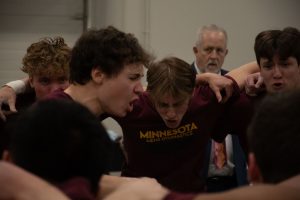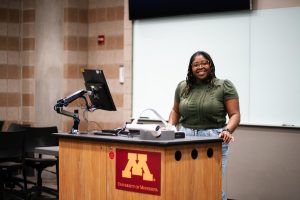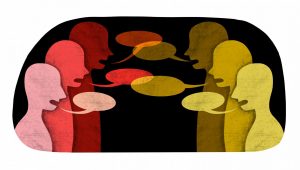Ditching traditional hospital beds and cold plastic chairs for massage tables and residential furniture, Fairview-University Hospital debuted a new complementary-medicine clinic Monday.
The Mind Body Spirit Clinic — part of the new Center for Spirituality and Healing — opened its doors to patients seeking approaches other than conventional medical methods.
Some of those methods include herbology, massage, acupuncture and nutritional therapy.
The clinic, a partnership between the University and Fairview Health Services, is designed to mix complementary and conventional therapies to provide the best possible care to patients.
“Complementary therapies are treatment for certain things,” said Elaine Anderson, manager of the clinic. “We’re trying to find what is effective.”
The 12th floor of the West Bank hospital’s East building received an overhaul to accommodate the clinic during the past few months.
Signs were put up for the new facility, and old hospital rooms were altered to create a more appealing atmosphere.
“The goal was to create an environment that is comfortable and aesthetically attractive to all of the senses,” said Mary Jo Kreitzer, director of the Center for Spirituality and Healing. “We’re stepping out of the box … using other approaches.”
In addition to the change in furnishings, the traditional window plant was replaced with a doll named “Acupuncture Man.” The doll shows all of the acupuncture points on the body.
Pam Weiss, a University educational specialist, said that although the clinic will use nationally accepted methods, such as massage and chiropractic therapies, it will make lesser-applied techniques like acupuncture available.
Weiss said less than 2 percent of Americans have tried acupuncture, yet it is an established practice in most of the world’s industrialized nations.
“If you talk to patients, you know that complementary medicine is out there and being used,” said Frank Cerra, vice president of the Academic Health Center.
The clinic’s staff consists of only two full-time employees. Currently however, 12 care providers work part time. The goal is to add eight more part-time providers in the immediate future.
All providers are medically supervised and have credentials to perform their respective methods.
“They all know their stuff,” Anderson said.
Hospital officials said they knew of less than 10 other universities that have similar clinics.
According to a study released by the American Medical Association, the American public’s willingness to use alternative medicine has increased during the past decade.
The use of alternative therapies increased by more than 10 percent between 1990 and 1997.
But one major stumbling block for wider use of alternative therapies is insurance. Many insurance companies refuse to pay for alternative techniques because of a perceived risk with some of the methods. Many patients have been forced to pay for therapy out of their own pockets.
A class will be offered every Monday afternoon at the clinic for people interested in complementary therapies.
Craig Gustafson covers the Medical School and welcomes comments at [email protected]. He can also be reached at (612) 627-4070 x3233.








